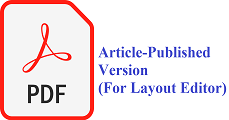Pengembangan Desa Lok Baintan dengan Pemanfaatan Sampah Ilung menjadi Kertas
DOI:
https://doi.org/10.32663/abdihaz.v1i1.759Keywords:
Disadvantaged village, Participatory communication, Water HyacinthAbstract
The Development of Lok Baintan Village by Utilizing Ilung Waste into Paper
Lok Baintan Village is a tourism icon of Banjarmasin, South Kalimantan, through the floating market, but it is classified as a disadvantaged village. The use of Kelotok (traditional boat) is the favorite choice of both local and foreign tourists. However, the trip is disturbed considering the amount of water hyacinth, local people call it as “ilung”, waste around the Martapura River. Ilung is a weed plant that grows very fast. The aim of this community service was to overcome the problem by training the community in Lok Baintan to produce a selling product, such as paper, from water hyacinth. The method used in this program was participatory communication. All parties were invited to participate in the communication process to decision making through dialogue, mentoring, and empowerment that were designed together and were sustainable. As a result, the Lok Baintan people had an improved-knowledge and a new skill. The products of this community service were paper, envelope and paper bag.




